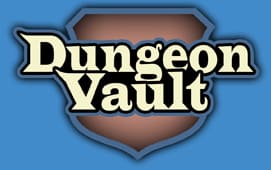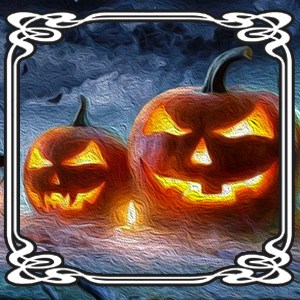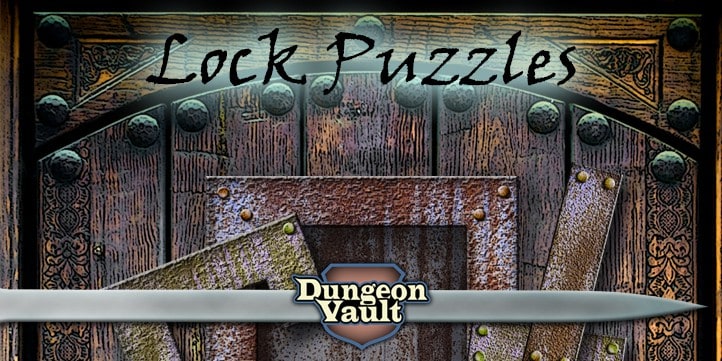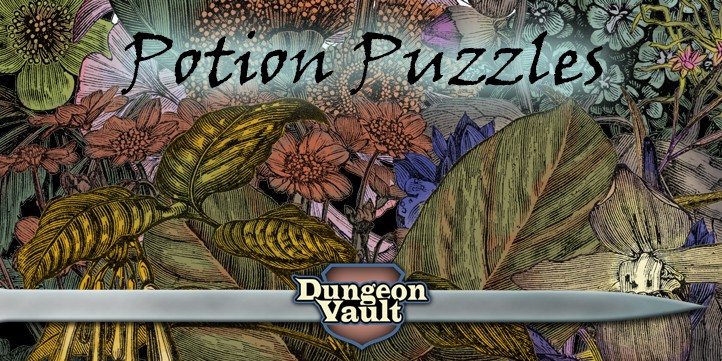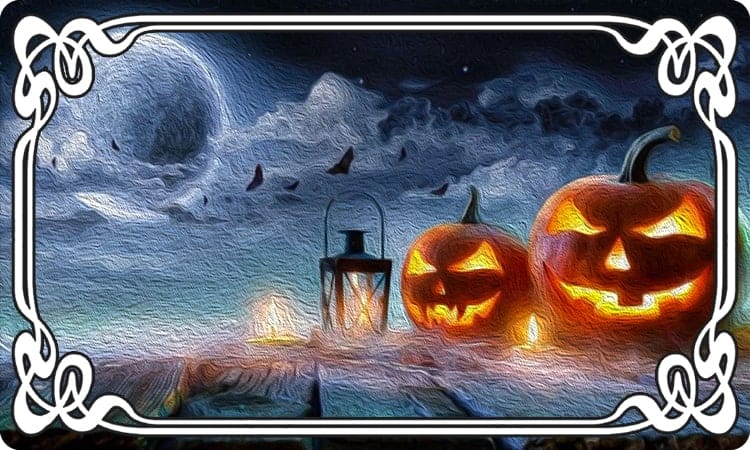
Do you want to scare your D&D players with a Halloween puzzle or horror puzzle that they will never forget? Then stick around. For in this ridiculously detailed guide for crafting terrifying D&D puzzles I’ll share my tricks for giving your players a spine-chilling scare. And we’ll learn why puzzles – of all things – are the perfect tool for the job. At the bottom of this article you’ll find my tips for which puzzles to use for your Halloween or horrow themed D&D games.
D&D Halloween and Horror Puzzles aren’t Scary!
If I were to ask you to name something scary, a puzzle is probably not the first thing to come to mind. And yet, puzzles work perfectly in your Halloween or horror themed D&D game. Here’s why:
-
Halloween and horror puzzles create urgency:
Many a great scare uses urgency to heighten the players’ stress levels. Just think of zombies who are slowly closing in while the victim – excuse me HERO – struggles to find the correct key on a key chain. Finding that key is a mini puzzle. But having to solve the puzzle under time pressure, can be very stressful and frightening… if you add the zombies.
Puzzles keep PCs from where they need to go and all the while the danger is increasing. A golden rule of horror is that danger needs to either build quickly (BOO!), or it must slowly but inevitable build to a climax. With puzzles you want the second option.
There are two types of slow scares. The first is where PCs try to get away from something like fleeing zombies while trying to solve a door puzzle. (I have a whole article on using door puzzles here).
The second method of creating urgency is by having PCs trying to get somewhere. For instance, what if a PC suddenly heard the voice of his granny screaming for help from the other side of the puzzle door? That would certainly motivate a player to want to open the door quickly. Who knows what’s going on the other side of that door!? This brings me to the second reason puzzles work; using the unknown.
-
Halloween and horror puzzles and the unknown
Puzzles in your D&D Halloween or horror game can really pay off when you use the unknown. So a PC hears his granny scream from the other side of a puzzle locked door. Is she being attacked? Does she need help? Not answering these questions and having the puzzle there to keep the PC from finding out will definitely raise stress levels. Because another golden rule of horror is that nothing will scare players more than their own thoughts. So let them fill in the blacks and imagine the worst.
Of course, after that first scream you have several ways to heighten urgency. You could have the screaming become louder. This is the blunt route. Or you could have the screaming slowly die out over time, which is the more subtle but very effective route. And then there is the gory route, where the screaming stops and the players hear a gnawing sound. (Hey, you wanted Halloween horror, don’t blame me.)
Halloween and Horror Puzzles with Combat in D&D
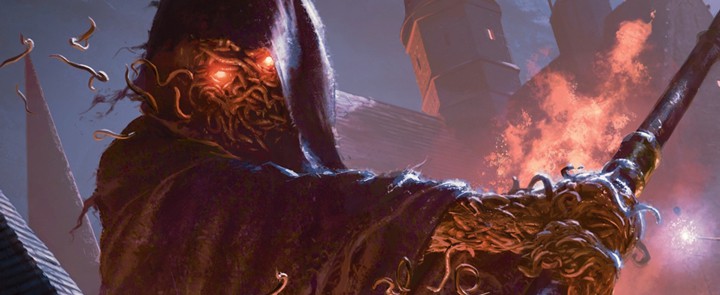
A common misconception is that in order to scare players, you need to attack them with scary monsters like zombies or ghosts. But your players fight monsters all the time. A zombie isn’t going to scare them if they’ve just fought a dragon last week. So what makes monsters scary and how do you combine this with puzzles?
Obviously, monsters need to look scary. How scary depends on your audience. You can go all the way from ‘a Disney not-so-scary Halloween style’ to a Resident Evil bloody gore fest, should you so desire. The decayed look seems to be popular. But other than looks, really scary monsters all have in common that they can’t be stopped. And the PCs are powerless against it.
Consider it: Skeletons will never get tired. Zombies are an unstoppable plague. Ghosts can’t be stopped by walls. And shadows can appear anywhere. Fighting these creatures should only slow them down, but the PCs know that they have to flee at some point. And in our previous example, a puzzle can stop PCs from getting away.
What I really like about using these type of unstoppable monsters is that the player who doesn’t enjoy puzzles – and there’s one in every party – now has the very important task of keeping the monsters at bay for as long as it takes the other party members to solve the puzzle. This way, everyone is engaged and you can keep the action going.
But besides using puzzles to make it hard for PCs to get away, you can also use them to defeat the danger. For instance, if the PCs manage to place the final puzzle piece into a horror themed puzzle, they will defeat the zombie apocalypse. All zombies will drop dead in a single wave. Of course, the puzzle pieces conveniently lie in catacombs and other creepy areas.
What Puzzles to Use for Halloween and Horror D&D Games?
I’m a puzzle nut and have created a ton of illustrated puzzles for use with D&D games or any other RPG. So which of these puzzles would work best with a Halloween or horror game?
My first recommendation is Lock Puzzles. You can drop this puzzle onto any door to lock it and create that sense of urgency. The rusted look of the puzzle pieces also works well with a horror themed D&D game. Another thing I like about this puzzle is that you can spread the puzzle pieces out over a dungeon or catacomb if you wish. But I’m sure the ghouls will hand those pieces over if you ask nicely.
My second recommendation is Wilderness Puzzles. Dark forests with gnarled trees like clawing fingers and foul witches, are a staple of Halloween and horror stories. And this puzzle incorporates that feeling of danger lurking around every corner. PCs must first hide from the many terrors in the forest, and only when they have puzzled out the lay of the land, it will be ‘safe’ to travel. Of course, it won’t really be safe. Every solved puzzle area also acts as a battle terrain offering many advantages and disadvantages. But that’s just another great way to merge puzzles with horrific monsters.
My third recommendation is Potion Puzzles. This one is absolutely perfect for your classic witch-and-the-cauldron Halloween puzzle. Players must collect all kinds of ingredients to brew a magical potion. Of course, they’ll have to use the witch’s cauldron before she returns!
Now potion puzzles uses herbs as ingredients which isn’t very scary. But you can easily swap those out with a rat’s tail, hag snot, or something more gory depending on your players’ age.
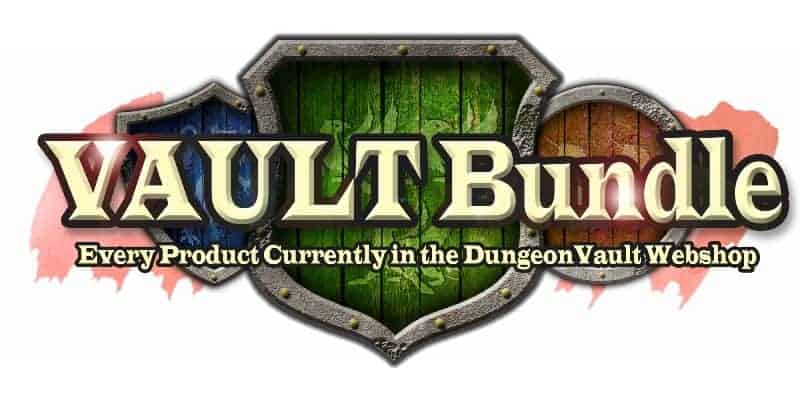
You also get the ‘Murder in the Monastery’ whodunnit puzzle adventure in this pack. It can be easily reskinned into a dark and gruesome tale. And the ‘Prepless GM’ will help you improvise a ghastly tale. And don’t forget to check out the ‘Fortuneteller Tarot’ to prophecize the PCs inevitable doom. All of this, and much more, is in the Vault Bundle. So be sure to check it out here.
By: Paul Camp
Image credit: WotC
